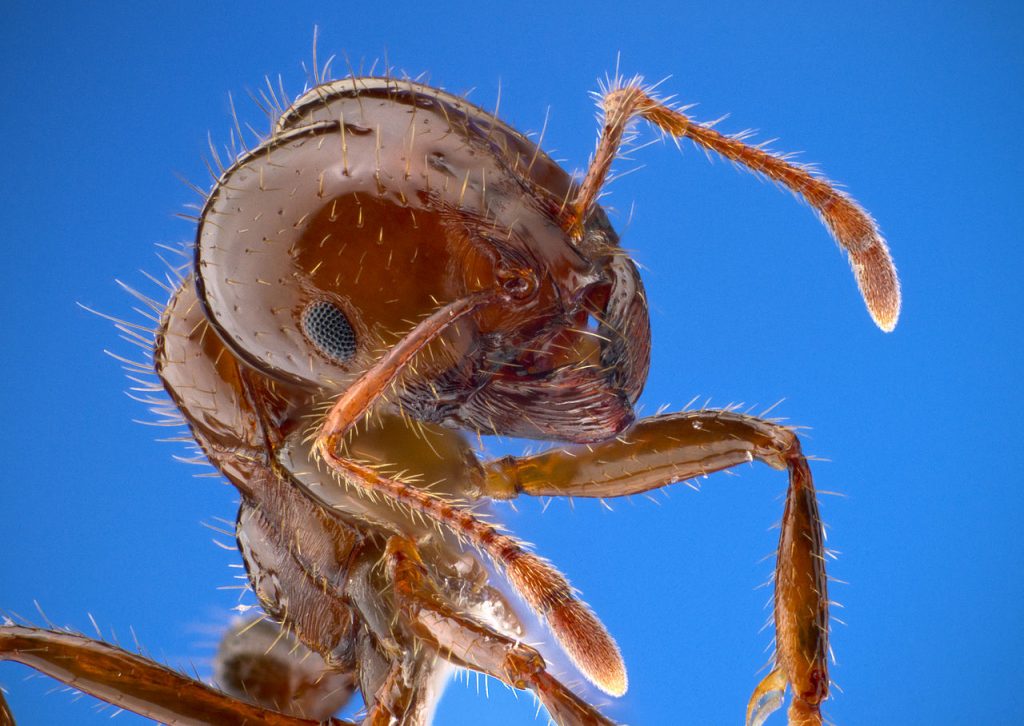South Korea asks A&M to assist with controlling invasion of fire ants

South Korea has asked Texas A&M University for help in stopping an alien pest new to their country, but all too familiar to most Texans, officials said.
“The red imported fire ant has invaded Asia over the last few years, but the South Korean invasion is brand new,” said David Ragsdale, professor and head of the Department of Entomology, College of Agriculture and Life Sciences.
Ragsdale said entomologists at Texas A&M are world authorities in the management and control of this serious pest, giving South Korea’s inquiry and ongoing collaborative work with Australia as examples.
Robert Puckett, Texas A&M AgriLife Extension Service entomologist in urban and structural insects, has been to Australia, where he advised government officials on insecticides and baits to use, when to use them and what level of control to expect, Ragsdale said.
Ragsdale said Australia passed a “Biosecurity Act” in 2014, which affects all residents and businesses in Queensland in their quarantine zone. The legislation is part of a 10-year effort by Queensland to beat back the advancing fire ant invasion. If they are successful, they’ll assess the progress and cost to see if total eradication is feasible, he said.
“The Australians are a bit behind the curve mobilizing some 13 years after the first detection in 2001,” Ragsdale said. “And now red imported fire ants are common across thousands of square miles of Queensland, where they’ve placed a moratorium on moving soil, mulch, potted plants and anything else that might inadvertently move fire ants.”
Unlike Australia, South Korea has mobilized within a matter of weeks, Ragsdale said, and has already reached out for help from Texas A&M’s entomology department.
Hojun Song, an associate professor in the department, was recently contacted by researchers at the Korean Animal and Plant Quarantine Agency, or APQA, an agency equivalent to the U.S. Department of Agriculture Animal and Plant Health Inspection Service Plant and Protection and Quarantine.
“Apparently, red imported fire ants have been reported from Busan, a port city in the southern part of Korea,” Song said. “However, there are not many fire ant experts in Korea, so they reached out to me for help in identifying one or more experts at Texas A&M.
“Entomologists from Korea plan to visit our department in September to, among other things, establish a network of experts in the areas of ecology, physiology, integrated pest management and genomics in fire ants to help them deal with the pest proactively. They also want to establish an ongoing international collaboration with our department.”
Ragsdale said logistics are being ironed out for the visit, but predicts his department should expect invitations from other countries as the red imported fire ant expands its territory across the globe.
He said it’s no surprise the growing global ant invasion is directly tied to world commerce.
“The culprit is container shipping,” he said, referring to the large rectangular metal overseas shipping containers most are familiar with. “These containers are not so air tight or ant proof, and when these sit in a port waiting for a ship or at a warehouse, colonies of ants can set up shop inside the containers and in a few weeks arrive in Asia or literally anywhere with a port. Currently, only about 2 percent of these containers are actually inspected, so it’s a problem that’s not going away overnight.”

